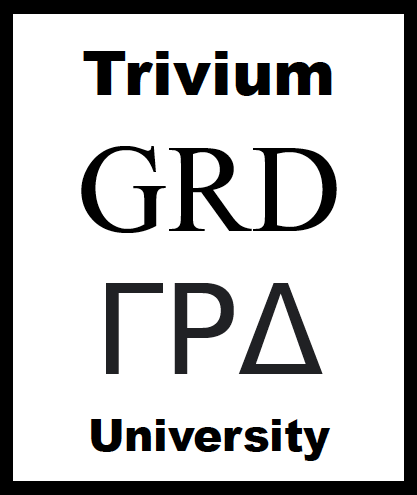Below are brief "contextualized-biographies" of some people who have been particularly important in the development of the Center for the Study of Digital Life (CSDL) and, therefore, Trivium University. We approach the Trivium with a “classical sensibility” (see Classical Sensibility in the Glossary). Accordingly, studying the early authors is an important path to understanding what we are doing. Modern discussions of the Trivium appear to have distorted those original meanings – so they will have to be retrieved in Trivium University classes and private study.
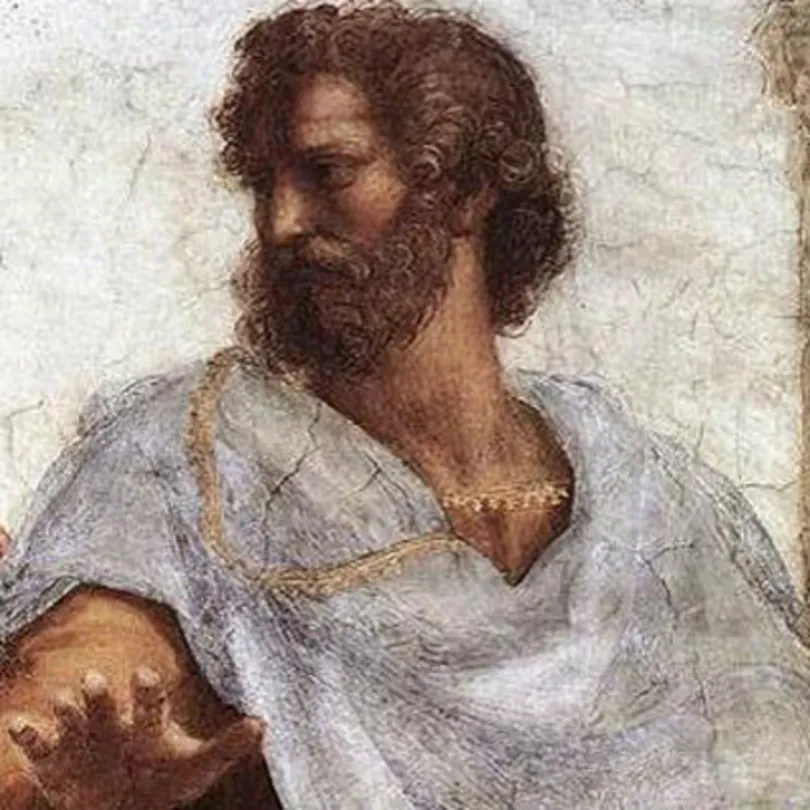
Aristotle (384-322BC) was a Greek philosopher from a northern colony called Stagira (thus, he was often called “The Stagirite,” underlining the fact that he was not Athenian). Greece was not a “nation” at that time and rivalries/alliances between city-states was common. He was the son of a physician in the Macedonian court and famously taught Alexander the Great. His key surviving works include discussions on physics, metaphysics, ethics, politics, logic and the human soul. Aristotle was a student of Plato (see below) and attended his Academy for 20+ years in Athens. He broke with his teacher on many issues, while agreeing on many others, leading to much discussion among partisans of one or the other. His “school” was called the Lyceum. Following the Axial Age (see Glossary) there was a flurry of philosophy in both the West and East Spheres (see Glossary), with many seeking to provide “sage advice” to the rulers of one state or another. These philosophies – including Confucianism &c – remain crucial in much thinking to this day. Aristotle might be called a “realist,” whereas Plato is often called an “idealist.” The tension between these attitudes persists, with many aspects of each being expressed by the same person. The approach taken by Trivium University is tilted towards the realist. This follows Aristotle's identification with “naturalism” and what might be considered “proto-science.” Trivium University believes that the Digital Paradigm (see Glossary) means we now need to develop New Sciences (see Glossary).
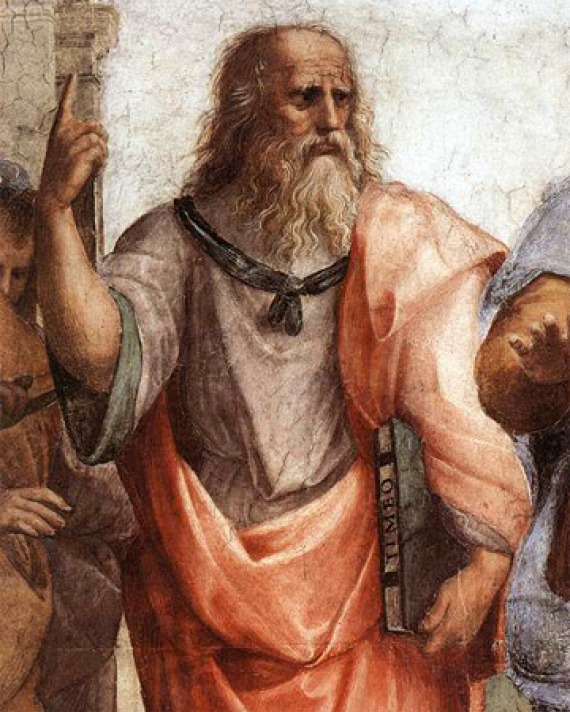
Plato was a Greek philosopher and the son of an Athenian noble family. His own teacher was Socrates (c. 470-399BC), about whom we know little beyond the famous “Dialogues” written by Aristotle, in which Socrates is often the central character. Socrates talked but didn't write – highlighting his status in the transition between the Oral and Scribal Paradigms (see Glossary). He was killed by drinking hemlock poison, as commanded by the Athenian “democracy” (having little in common with how that term is used today). The charge was “corrupting the youth,” which has never been fully explained. We lean to the theory that he was in conflict with the annual performance of the Mystery of Eleusis, during which attendees (including all Athenian citizens, included women) drank a hallucinogenic “beer” that conveyed an enduring sense of immortality. With his mentor murdered, Plato took it upon himself to “reform” Athens – a massive task that Aristotle never faced (although he did compare the “constitutions” of many Greek states). In his dialogue “The Republic,” Plato set up a curious story about the “Parable of the Cave,” in which an underground captive escapes into the day-light, then sees reality and returns only to be killed by those entranced by the flickering flames on the cave walls. We suggest that Socrates was that captive and the “cave” was the Telesterion roofed-temple at Eleusis. This use of parables to tell a story without suffering the consequences of “truth-telling,” then became the origin of Leo Strauss “Persecution and the Art of Writing,” separating audiences into “exoteric” and “esoteric.” Plato – or more accurately a series of later philosophers known as “Neo-platonists” – remains central to much Western thought. In fact, he has been more been recently appropriated by China as an expression of their own idealistic devotion to the “Good.” Plato's Forms (see Glossary) are analogous to much in Chinese philosophy and, in particular, seem to have been largely discarded in the modern West. Today, Chinese undergraduates are often taught Plato (along with Aristotle and others, in fresh translation), in parallel with their study of Chinese classics. We suggest that this retrieval (see Glossary) of the classics in China is an integral part of their response to the current paradigm-shift to Digital – answering parts of the question “What does it mean to be human?”
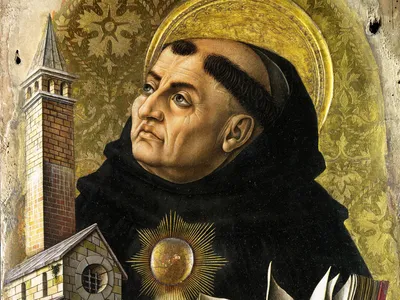
St. Thomas Aquinas OP (Black Friars), was an Italian
Dominican priest as well as a philosopher, theologian and jurist. His family was from Naples and was mostly
composed of military soldiers.
Reportedly, they didn't approve of his religious vows and attempted to
kidnap him to change his mind. That
failed and Aquinas spent much of his life teaching at the University of Paris
(then the European center of theological research), after studying with his
mentor, St. Albertus Magnus (c. 1200-1280), in Cologne. He died on the way to
attend the Second Council of Lyons, organized by Thomas's main contemporary
rival, St. Bonaventure, then in charge of the mendicant Franciscan Order
(Friars Minor or Grey Friars).
Aquinas is often credited with the retrieval of the work of
Aristotle in the 13th-century, often with fresh Latin translations. Much of the Greek work of both Plato and
Aristotle was unreadable to Latinists – a split which underlies the separation
between the Catholic and Orthodox churches, typically dated to the “Great
Schism” of 1054 but in place well before that.
Aristotle's realism begins with the notion that “all we know comes from
our senses.” Plato, on the other hand,
was deeply skeptical of sensory knowledge, preferring his “perfect” Forms. Aristotelian “forms” on the other hand are
very real, although immaterial, joining with matter in Aristotle's monistic
scheme of “hylomorphism.”
Aristotle's form/matter construct leads to his elaboration of
causality – particularly “Formal Cause” (see Glossary), which is crucial for
the Trivium University curriculum (as taken up by the McLuhans, see
below). We identify Formal Cause with
the effects of technological environments and “media” (see Glossary). The form of a living organism – in
Aristotle's philosophy – is called its “psyche” (which becomes “anima” in Latin
and “soul” in English). The Psyche
(Greek) is what “animates” life (Latin).
Aquinas's “Commentary on Aristotle's De Anima” (or “Peri Psyche” in
Greek) is one of the richest sources for an understanding of the human
soul. This knowledge must now be
retrieved, as we recover Scribal sensibilities under Digital conditions.
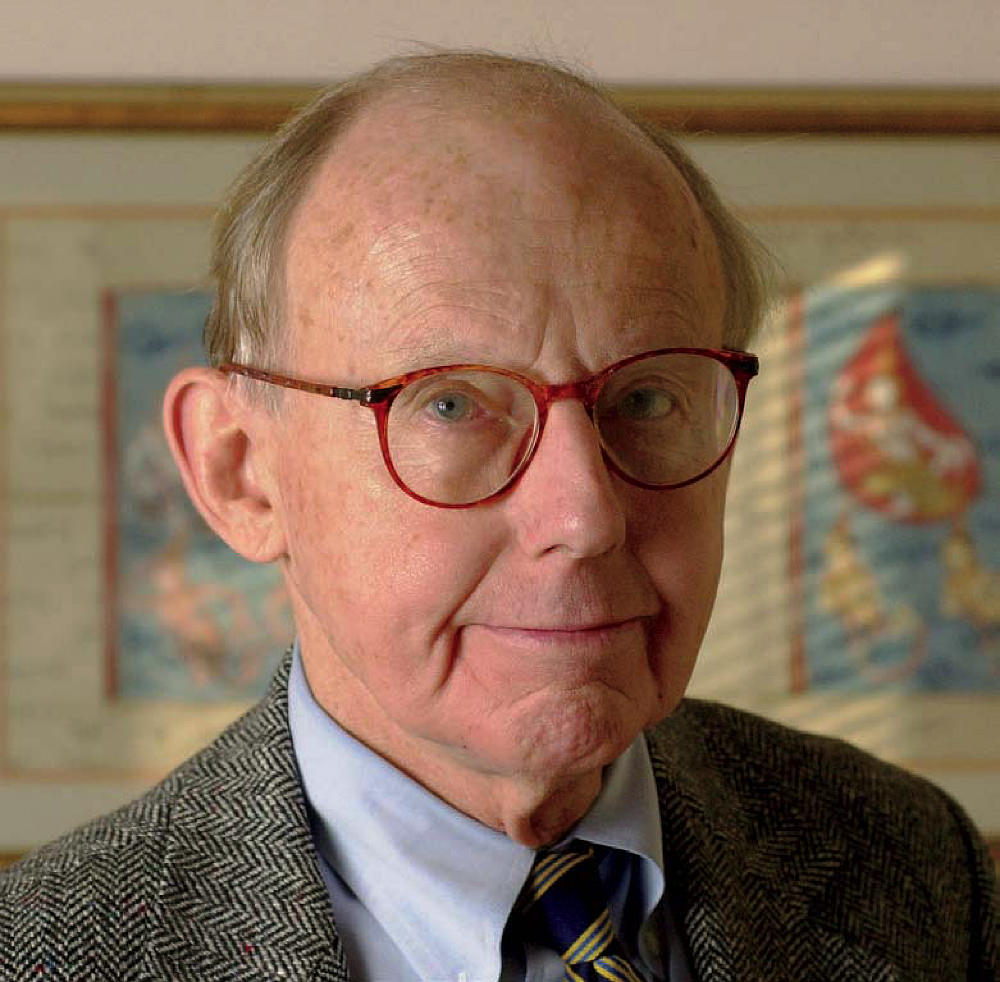
Samuel P. Huntington was an American political scientist,
academic and government adviser, spending much of his career at Harvard --
where CSDL co-founder, Phil Midland, studied with him. His most famous work was “The Clash of
Civilizations and the Remaking of World Order” (1996) – a book based in his
1993 article in Foreign Affairs (and often considered a response to his earlier
student, Francis Fukuyama's 1992 “The End of History and the Last Man”). In addition to Fukuyama, Huntington's
students included Fareed Zakaria, now a television host on CNN.
Huntington's “Clash” theme was rejected by the Globalist (see
Glossary) foreign policy establishment in the 1990s. Post-Cold War attitudes remained firmly
committed to a “one-world” solution to conflicts, based on enduring American
hegemony. But Huntington had been
writing about civilizational rise-and-fall for decades before “Clash.” His 1965 essay, “Political Development and
Decay,” discusses how things unravel and his 1966 “Political Modernization in
American and Europe,” forecasts an American “collapse” by the year 2000 (a date
selected since this essay was a provocative contribution to the AAAS/Daedelus
1967 compilation “Towards the Year 2000”).
We have adapted Huntington's thesis as the basis of our Three
Spheres: East, West and Digital framework.
In detail, this framework is the basis of the fourth of Trivium
University's “core” courses. We believe
– joined increasingly by many others – that Globalism is an obsolete way to
understand geo-politics and that, in particular, it was an effect of the previous
Electric Paradigm (see Glossary). We are
now Digital, which is a paradigm that Huntington did not anticipate. Accordingly, we have expanded Huntington's by
shifting from “civilization” to “sphere” (see Glossary) and adding the Digital
Sphere, composed of those who wish to use technology to replace humanity.
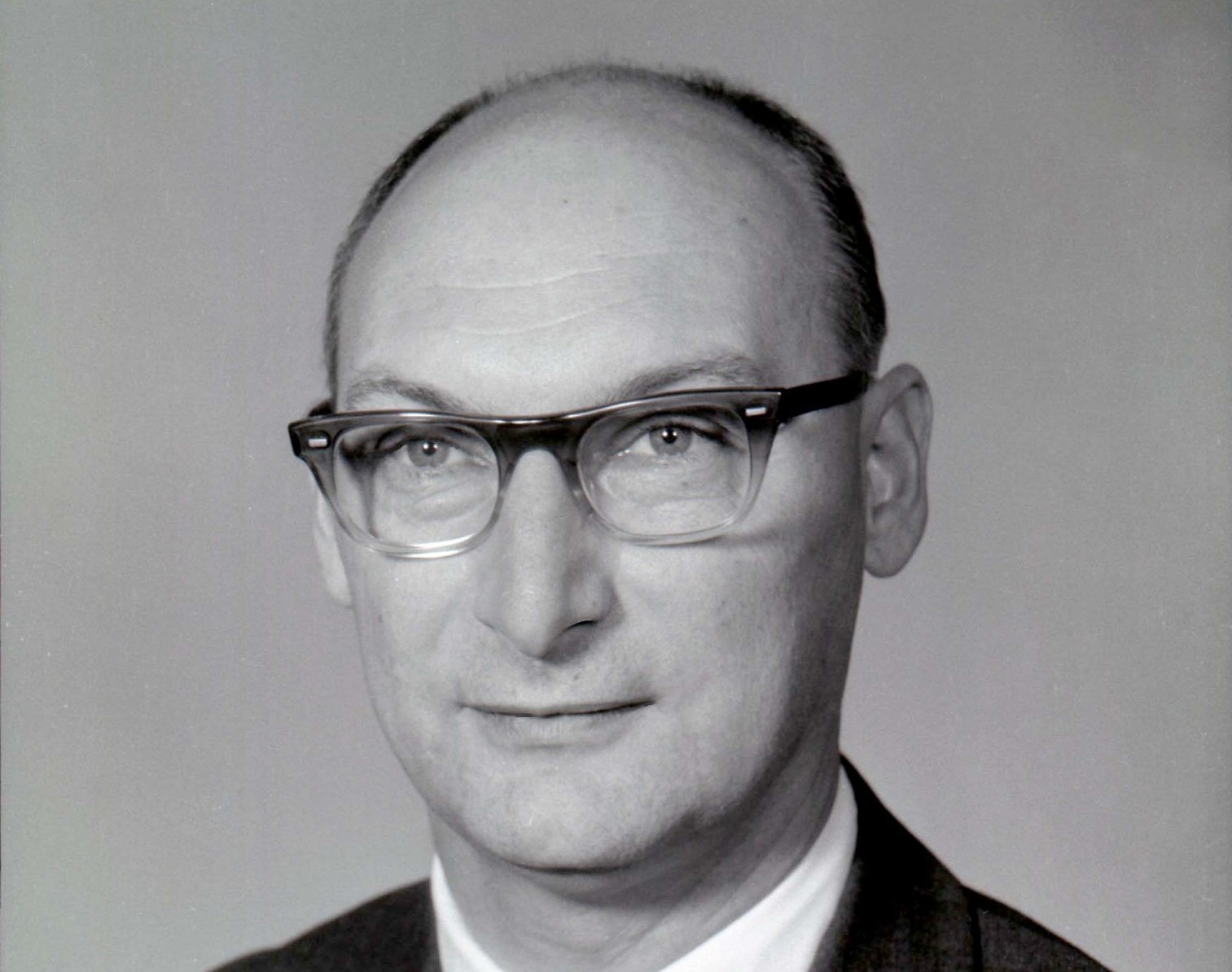
Andrew W. Marshall was an American foreign policy
expert who founded and served as director of the Pentagon's Office of Net
Assessment (ONA) from 1973 to 2015. His education
was at the University of Chicago, where he earned an M.A. in economics in
1949. He deferred his PhD and instead
joined the fledgling RAND Corporation in Santa Monica – sometimes called the
“first think-tank” – where he was a close associate with Herman Kahn (serving
as best-man at Kahn's wedding), as well as nuclear strategists Alfred and
Roberta Wohlstetter. Kahn went on to
found the Hudson Institute in 1961 and is credited with the phrase “Thinking
the Unthinkable.”
Marshall had many supporters (as well as detractors) and found
that his greatest impact came with those who could think intuitively and
expansively. Instinct + the facts. He is said to have followed the “Rule of
Five: Listen Four Times, Then Talk,” leading to a style of interactions that
won him the nickname of the taciturn “Yoda” (of Star Wars fame). While many call him a “strategist,” his Net
Assessment – which we will discuss in detail at Trivium University – actually
precedes what most mean by that term. In
his recently published memoirs, “Reflections on Net Assessment,” he carefully
describes his effort as “diagnosis.”
This is the approach that evaluates all aspects of the actual situation
first – without speculation or wishful
thinking. In this regard, he was an
example of Aristotelian realism.
Diagnosis on a global scale – far removed from strategical
planning and tactical execution – is not a common skill. Marshall trained hundreds of people at ONA
but left no peer as successor. The
Center for Digital Life conducted research for ONA and met with Marshall. His retirement in 2015 was the impetus for
founding the Center the same year. Known
as “Andy,” Marshall's absence from the Pentagon's thinking process has not had
positive results. Whereas his work
contributed significantly to avoiding a highly kinetic WW III, current events
appear to have put us on a very different course. In turn, avoiding that conflict by
diagnosing today's Digital Paradigm and
helping to build a cadre of potential new leaders is imperative for Trivium
University.

Herbert Marshall McLuhan and Thomas Eric McLuhan – both of whom opted to be known by their middle names – were two
of the most penetrating “media gurus” of modern times. Marshall was Canadian, while Eric (the first
of Marshall's six children) was born in St. Louis, while Marshall was teaching
and completing the work on his 1943 Cambridge PhD thesis, “The Classical
Trivium: The Place of Thomas Nashe in the Learning of his Time.” Eric would later take his PhD at the
University of Dallas, published in two volumes “The Role of Thunder in
Finnegans Wake,” and “Cynic Satire.”
The two, father-and-son, worked closely together – particularly in
the 1970s – resulting in the rewrite of Marshall's 1964 “Understanding Media:
The Extensions of Man” as “Laws of Media: The New Sciences” (1988). McLuhan's style was largely non-theoretical
(i.e. not Dialectical, see Glossary) and he explicitly declared himself to be a
“grammarian.” To help people with
grasping the basis of grammar, the McLuhans invented the heuristic called the
Tetrad – which we will also be teaching at Trivium University (perhaps for the
first time). The Tetrad asks us to
consider four distinct ways that human artifacts impact humans, all at
once. This approach is based on what the
theologian Henri de Lubac called “Medieval Exegesis: The Four Senses of
Scripture” (a four-volume work, written in 1956-59 in French, that Eric read
while studying for his PhD).
The McLuhans turned the common understanding of technology on its
head. Instead of asking “What can I do
with this?” – which is typical of “instrumentalizing” technology – they asked
“What is this technology doing to us?”
For this reason, McLuhan emphasized Aristotle's Formal Cause instead of
the common-place Efficient Cause (see
Glossary) – best known through everyday cause-and-effect. The multiple senses of Causality is very
important for Trivium University because
it has largely disappeared from our Modern world and must be retrieved to
understand the effects of living in the Digital Paradigm. Marshall died in 1980, so his experience
ended with Electricity. The fact that
Digital is a quite different Formal
Cause is essential for the work of CSDL.
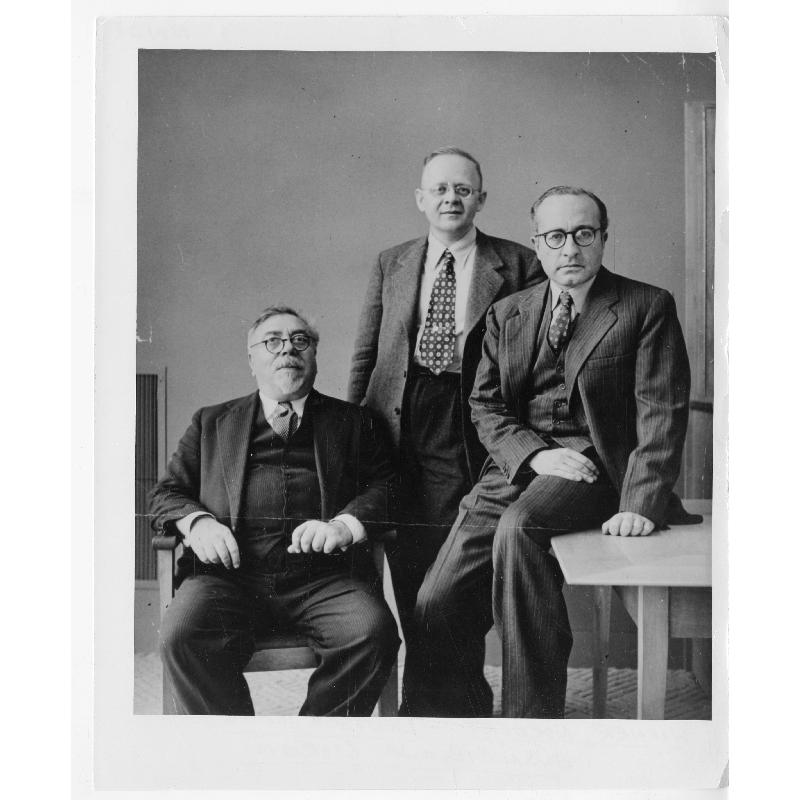
Norbert Wiener was an American mathematician and
Giorgio de Santillana was an Italian-American historian of
science. They were close friends and
collaborators at MIT and mentors to the father of CSDL co-founder, Mark
Stahlman, William – himself a historian of ancient mathematics. Wiener is best know for his coinage of the
term “cybernetics,” as reflected by his 1948 book with that title (a name
adopted at a party that William also attended).
He followed up with the 1950/54 “The Human Use of Human Beings,” which
described his deep concerns about how cybernetics would likely be applied to
human detriment – particularly by the military.
Giorgio is perhaps best known for his 1955 “The Crime of Galileo” and
the controversial 1969 “Hamlet's Mill” (co-authored with Hertha van Dechend),
which theorizes that ancient myths were often the result of accurate celestial
observations.
Wiener had been home-schooled by his father Leo, a language
philologist, and took his PhD in philosophy from Harvard at the age of 18, then
going off to Cambridge to study with Bertrand Russell. Wiener sharply disliked Russell's
“positivist” philosophy and promptly shifted to studying mathematics.
Considered a “boy-genius,” he was known as a “pacifist” having experience with
the military – who classified his work during WW II – and voicing his
opposition to greatly expanded military-funded scientific research
afterwards. His loyalty was suspected by
the FBI, who threatened him with a HUAC investigation (already conducted
against an MIT colleague) -- forcing him to rewrite “Human Use” and ending his
cybernetics-based cooperation with social scientists. His final work was given as the Terry Lecture
at Yale and later published as “God and Golem, Inc.: A Comment on Certain
Points where Cybernetics Impinges on Religion” (1966).
The Center for Digital Life and Trivium University are a direct
result of Stahlman and his colleagues
taking up his “godfather” Wiener's concerns about the application of cybernetics
on society. Passed to him through his
father, these concerns where clearly prescient. Today there is little doubt that most human
occupations have already been invaded by robots/algorithms. ChatGPT is only the latest example of A.I.'s
“generative” (or what, for humans, is often called “creative”)
capabilities. Much more to come. Among those leading the charge to replace
humans with machines are, as Wiener anticipated, the militaries of the world –
who don't want humans on the battlefield.
Likewise, many corporations are prepared to replace humans in the
workplace. Understanding this dynamic
and providing a basis for humans to “recover their humanity” is crucial for
Trivium University.
